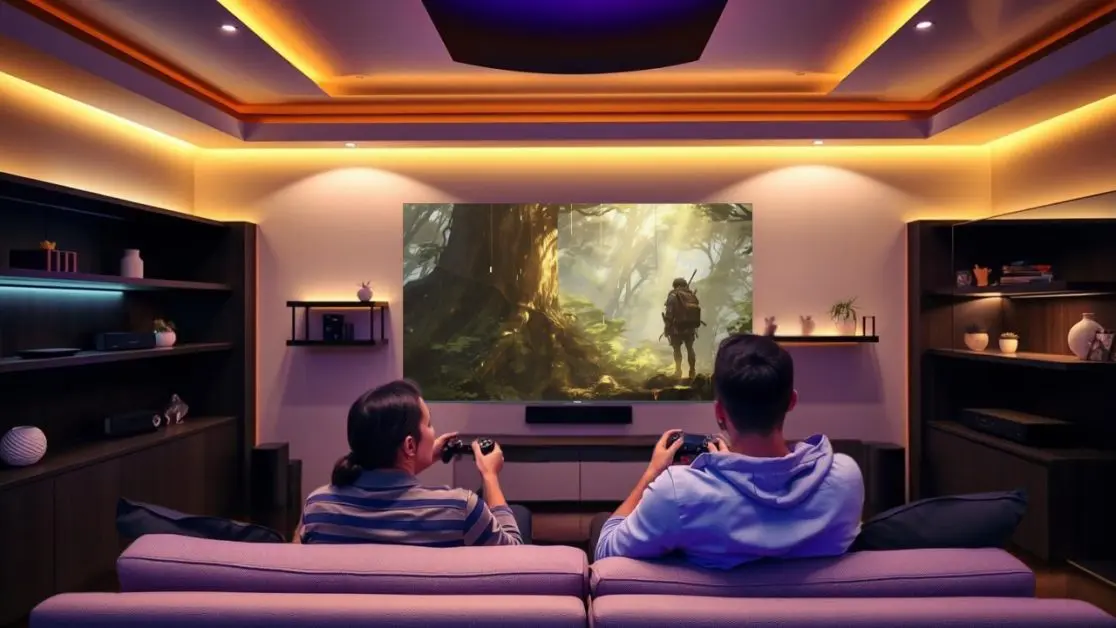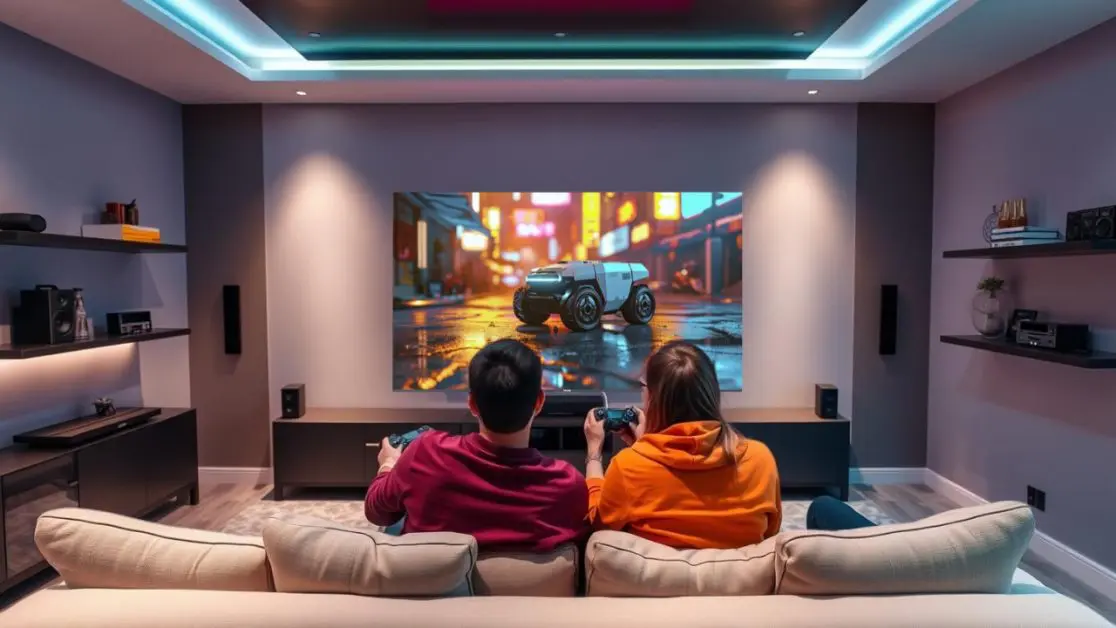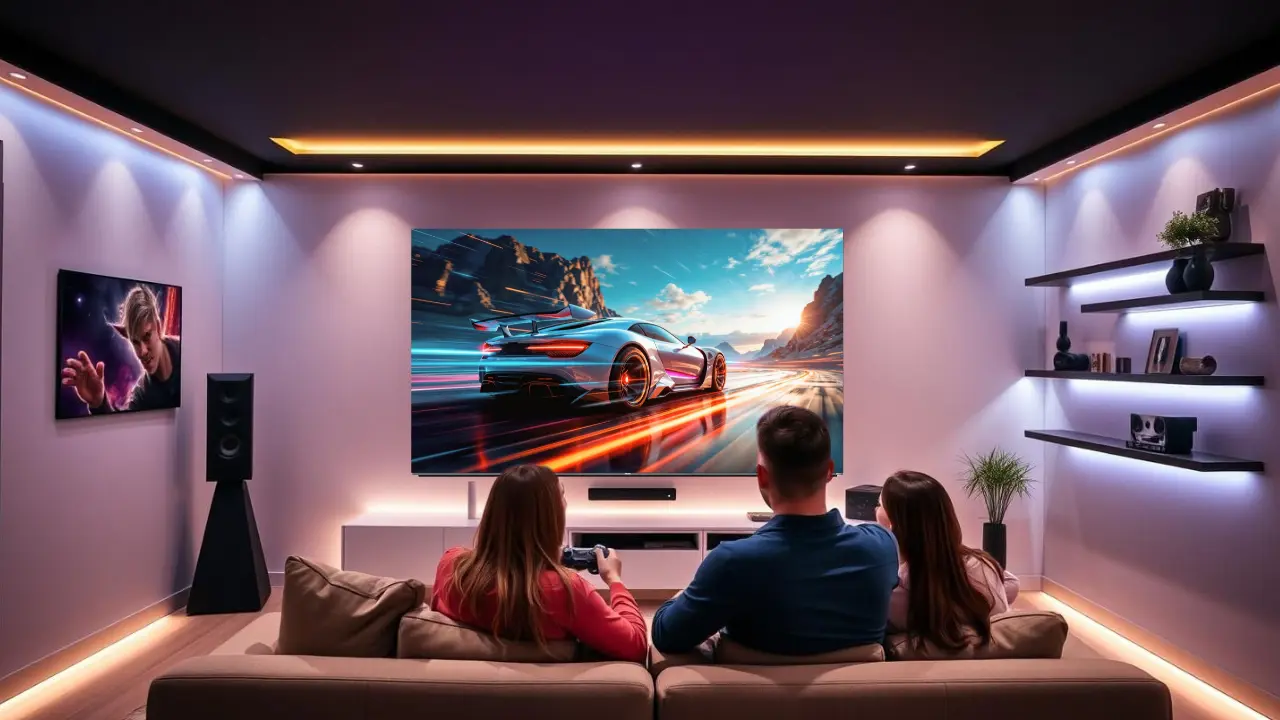If you’re into hardcore gaming on a PS5 or an Xbox Series X, then the kind of screen you use is as important as the console level features. It is not just the size or the aesthetics. It is everything that enables the display to work, and for gamers in India looking to get a “one of a kind” experience, two premium options rule the market: QLED and OLED.
Which one provides a better gaming performance?
Wondering which TV will let you enjoy 4K HDR gaming and confidently claim that your living room is now a gaming room? Hold your horses, let’s first explore what sets apart QLED from OLED and how they deal with high paced 4k gaming.
First, Let’s Break It Down: What is QLED and OLED Anyway
First, Let’s Break It Down: What is QLED and OLED Anyway?

QLED stands for Quantum Dot Light Emitting Diode. It uses an LED backlight that passes through a quantum dot filter, producing rich colours and high brightness. These TVs shine (literally) in bright rooms and deliver sharp visuals.
OLED, or Organic Light Emitting Diode, is a different beast. Each pixel in an OLED TV lights up on its own. That means you get perfect blacks, infinite contrast, and ultra-smooth motion. No backlight. No bleeding. Just deep, cinematic visuals.
Both have their strengths, but gaming demands something more specific.
What Gamers Actually Need From a TV
You might be thinking, “Any 4K TV is fine, right?” Not quite.
Here are the actual specs that matter when gaming on your PS5 or Xbox:
- Low Input Lag: Your button press must reflect instantly.
- High Refresh Rate: Ideally 120Hz for smoother gameplay.
- HDR Performance: More vibrant colours and better lighting in games.
- HDMI 2.1: Needed for 4K at 120Hz and VRR (Variable Refresh Rate).
- Response Time: Lower is better, especially in competitive games.
- Burn-in Resistance: Important if you play the same game or HUD for hours.
Let’s now see how QLED and OLED TVs match up for these needs.
1. Picture Quality: OLED is King (But QLED Isn’t Far Behind)
If you play story-driven games like God of War or Horizon Forbidden West, you’ll appreciate deep blacks, high contrast, and vibrant HDR. OLED wins here hands down. Since every pixel lights up individually, you get that breathtaking immersion.
But wait. QLED TVs have improved massively and with quantum dot tech, they now offer brighter visuals, which pop in a well-lit room. Games like FIFA or Forza look fantastic on QLED too.
Winner: OLED for dark rooms and cinematic games, QLED for bright spaces and sports/action games.
2. Input Lag & Response Time: OLED Has the Edge
Gamers hate delay. OLEDs usually have lower input lag and faster response times. That means every movement, turn, or shot you make registers faster on screen. Useful for shooters and fighting games.
QLEDs have closed the gap, and some premium models have Game Mode Pro features that reduce input lag a lot. Still, OLED holds a slight advantage.
Winner: OLED by a small margin.
3. Burn-In Risk: QLED is Safer

Here’s the catch with OLED. If you leave the same image or HUD on screen for hours (like the health bar in Call of Duty or FIFA scoreboard), there’s a small risk of permanent image retention or “burn-in”.
QLEDs, on the other hand, use a backlight and are immune to burn-in. You can game, binge, pause, walk away, and come back hours later, no worries.
Winner: QLED for safety and long gaming hours.
4. Brightness and Colour Pop: QLED Stands Out
OLEDs look incredible in dark or moderately-lit rooms. But if your setup is near windows or you often play during the day, QLED’s higher brightness and vivid colour punch will definitely stand out.
QLED TVs also maintain colour accuracy even at very high brightness. So explosions, magic spells, car lights, they all pop.
Winner: QLED for bright environments.
5. Longevity and Power Efficiency
Both OLED and QLED TVs are built to last. But QLED panels, thanks to their LED backlights, generally age more slowly than OLEDs.
OLED TVs, while stunning, can lose brightness after several years of heavy usage. Also, QLEDs tend to be more power-efficient, especially on larger screens.
Winner: QLED for long-term durability and energy saving.
So, What Should You Pick for Gaming?

Let’s simplify it.
Choose OLED if:
- You love cinematic, single-player games.
- You play in darker rooms.
- You want the most premium image quality.
Choose QLED if:
- You game during the day or in bright rooms.
- You play long competitive sessions.
- You want safety from burn-in and extra brightness.
Top Picks for Indian Gamers

Now, if you’re wondering which models to shortlist, here are some killer TVs designed for premium gaming and entertainment:
OLED 165cm (65) Google TV
Dolby Vision IQ and HDR10+
4K Ultra HD with stunning contrast
Ideal for cinematic game
OLED 140cm (55) Google TV
Deep blacks, ultra-slim design
Perfect size for medium-sized Indian living rooms
QLED 140cm (55) Smart Google TV
Vibrant colours and smoother refresh
Great balance of gaming and everyday use
QLED 109cm (43) Google TV
Budget-friendly pick for smaller gaming setups
HDR10 and wide colour gamut
Final Thoughts
Whether you go for OLED or QLED, the bottom line is this, know your gaming habits and room setup before buying. If you’re into cinematic single-player sagas and love a theatre-like vibe, OLED will blow your mind. But if you’re a competitive gamer or someone who plays for hours during the day, QLED might be the smarter pick.
Either way, Haier India has TVs tailored to meet your style, performance needs and budget. With top-notch features like Dolby Vision, HDR10+, Game Modes, and built-in Google TV, you’re not just buying a screen. You’re investing in your gaming lifestyle.
Ready to level up? Visit Haier India and explore the full range of QLED and OLED TVs built for gamers like you.

